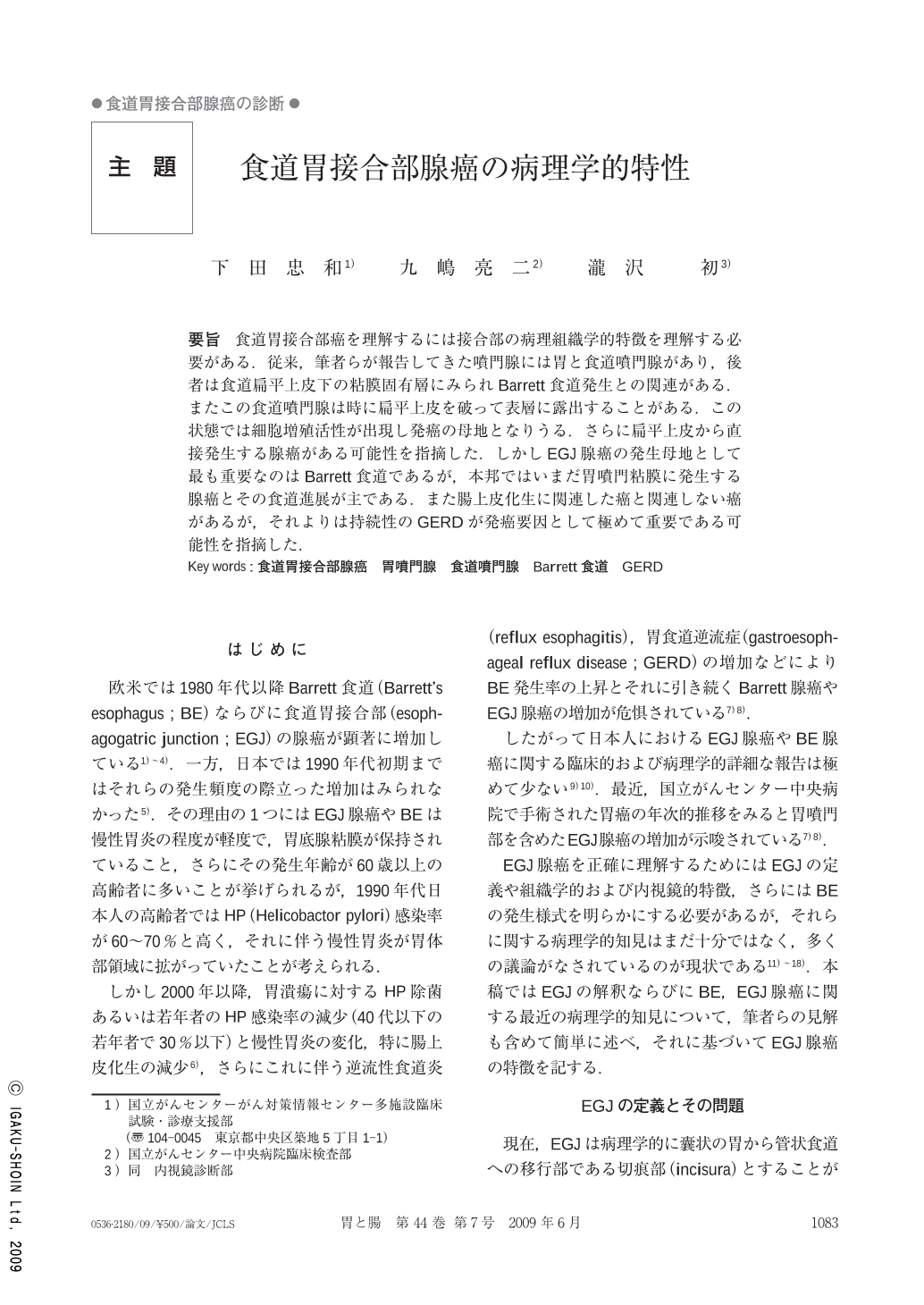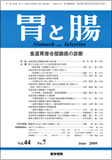Japanese
English
- 有料閲覧
- Abstract 文献概要
- 1ページ目 Look Inside
- 参考文献 Reference
- サイト内被引用 Cited by
要旨 食道胃接合部癌を理解するには接合部の病理組織学的特徴を理解する必要がある.従来,筆者らが報告してきた噴門腺には胃と食道噴門腺があり,後者は食道扁平上皮下の粘膜固有層にみられBarrett食道発生との関連がある.またこの食道噴門腺は時に扁平上皮を破って表層に露出することがある.この状態では細胞増殖活性が出現し発癌の母地となりうる.さらに扁平上皮から直接発生する腺癌がある可能性を指摘した.しかしEGJ腺癌の発生母地として最も重要なのはBarrett食道であるが,本邦ではいまだ胃噴門粘膜に発生する腺癌とその食道進展が主である.また腸上皮化生に関連した癌と関連しない癌があるが,それよりは持続性のGERDが発癌要因として極めて重要である可能性を指摘した.
Pathological and anatomical evaluation of esophagogastric junction(EGJ)is very important for understanding of EGJ cancer. We described normal condition of histological features of EGJ. Histologically, gastric and esophageal cardic glands exist 20mm in length on the EGJ. In the lower esophagus, columnar epithelial island(CLE), which is exposed in the surface of squamous epithlelium, could be found frequently. This CLE shows proliferative activity. Esophageal cardiac glands and CLEs might play important rule in the development of Barrett's esophagus.
The definition of EGJ cancer is proposed that epicenter of cancer is exist in gastric and cardiac gland mucosa. Among EGJ adenocarcinoma, gastric cardiac gland type is most common, and BE type is low incidence in Japanese yet. Another way of adenocarcinoma of lower esophagus is suggested from esophageal cardiac glands or basal layer of squamous epithelium. Common gastric cardiac cancer shows high incidence of esophageal spreading into the propria mucosa. There is two distinct pathway of carcinogenesis of EGJ-adenocarcinoma related or unrelated to intestinal metaplasia and consistent gastroesophageal reflux disease might play important role in the development of EGJ-adenocarcinoma.

Copyright © 2009, Igaku-Shoin Ltd. All rights reserved.


